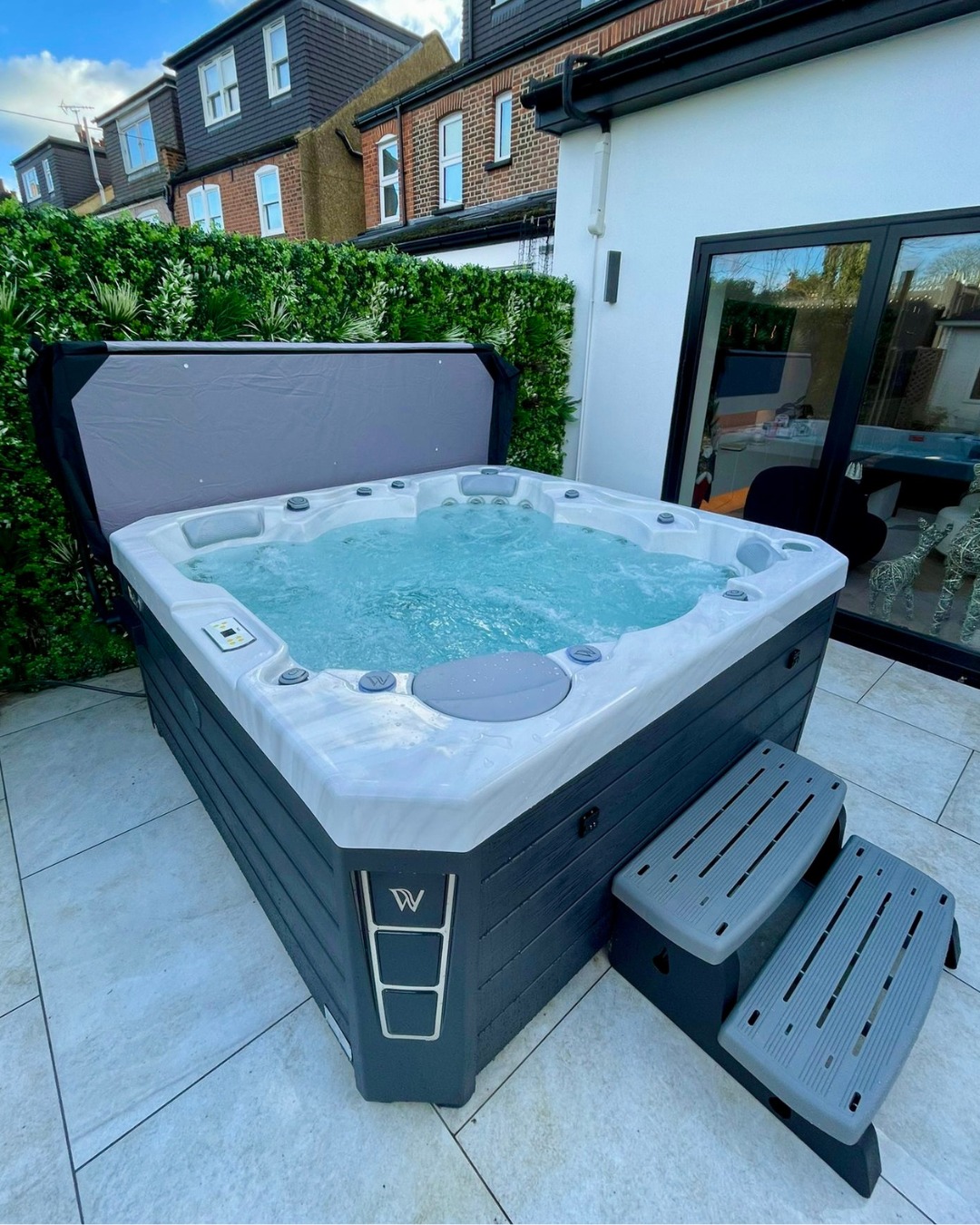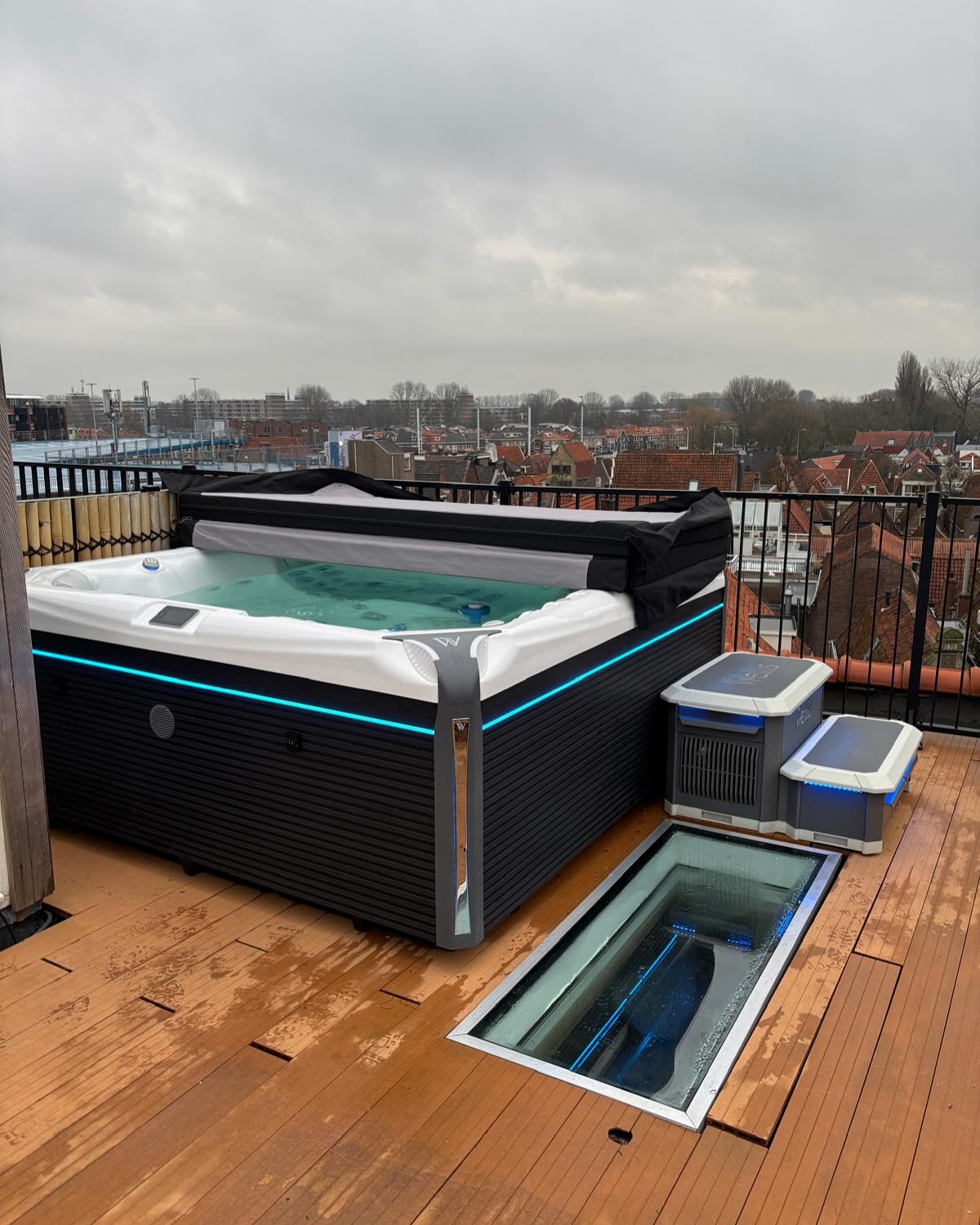There is nothing more frustrating than looking forward to a long soak in your hot tub after a long day to discover it’s too cold. Whether you’re a new hot tub owner or a seasoned pro, understanding how long does a hot tub take to heat up is important to get the most out of your spa.
Unfortunately, there is no universal rule for hot tub heating time. It very much depends on the size of the hot tub, how well it’s insulated, the power of the heater and even the weather conditions. This guide explains how to heat a hot tub faster and gives practical tips to heat your tub quickly but still being energy efficient.
Understanding Hot Tub Heating Time
The answer to what should a hot tub temperature be is between 37°C and 40°C. On average, a hot tub will take between four and eight hours to heat up, but this very much depends on the starting temperature of the water. This is an approximate hot tub temperature guide, however, a well-insulated hot tub with a powerful heater can reduce this significantly. Heating the hot tub is quite straightforward, but the results vary depending on three main components: the volume of water, the heater’s power, and how well the hot tub retains heat. These three elements work together to determine how long your hot tub takes to reach the ideal temperature for ultimate relaxation
If you’re planning a spa session for later in the day, understanding how long to warm up a hot tub allows you to start the process early and avoid any frustrating delays. A little planning goes a long way to ensuring your hot tub is always ready when you are.

Factors That Affect Hot Tub Heating Time
Starting Water Temperature
If you fill your hot tub with water straight from an outdoor hose, you could be starting with water temperatures as low as 10°C (50°F), especially in the cooler months. By contrast, the best way to heat a hot tub faster is by using warm water from an indoor tap which can give your heater an advantage. In fact, just a small temperature difference at the beginning can save hours on the heating process.
Heater Power and Efficiency
Most home hot tubs on the market are equipped with heaters ranging from 4 to 6 kilowatts. A higher kilowatt rating generally means faster heating, although the downside is higher electricity usage. Larger premium models may come with more powerful heaters or dual-zone systems, which will allow for better control and improved performance across multiple seats or zones.
Modern, energy-efficient heaters are designed to work smarter, not harder, therefore maintaining your desired temperature with less effort once the water is warm.
Outdoor Temperature and Weather Conditions
If your hot tub sits outside, the weather conditions will absolutely influence your heating times. Heating during the winter can take much longer, especially if your tub is poorly sheltered or exposed to wind. Even in milder weather, breezes and cooler air temperatures can slow things down by pulling heat from the surface of the water.
If you regularly use your hot tub during colder months, look at investing in a thermal blanket and a proper enclosure or windbreak, which can help maintain a more stable temperature and reduce heat loss.
Hot Tub Insulation Quality
Insulation is probably one of the most important factors in long-term heating efficiency. A well-insulated hot tub keeps heat in and cold out, meaning the heater doesn’t have to work as hard to raise or maintain water temperature. Poor insulation, on the other hand, allows heat to escape through the shell, base, and cabinet, significantly extending heat-up time.
Premium hot tubs from Wellis UK come with high-density foam insulation as standard, providing maximum heat retention and improved energy efficiency. This not only speeds up the heating process but also reduces ongoing energy costs.
Cover Usage While Heating
In cooler weather, the surface of the water loses heat rapidly. That’s why a well fitted, high quality cover is important as it traps heat and reduces the time it takes for your hot tub to reach optimum temperature.
Remember to inspect your cover for signs of wear and tear as even the smallest hole can allow heat to escape and make a big difference to your hot tub’s heating efficiency.
Water Circulation and Jet Usage
It’s a common misconception to think that blasting the jets will help the tub heat up faster. In fact, by using the jets on full, especially those that draw in outside air can do the opposite and actually cool the water down. By using gentle circulation pumps that evenly spread the heat without introducing cold air is much more efficient.
How to Speed Up the Heating Process
Use a High-Quality Hot Tub Cover
A thick, insulated cover in good condition will trap heat effectively and reduce any evaporation. If your cover feels lightweight or waterlogged, then it might be time to replace it. Even a high-performance spa heater can’t compensate for rapid heat loss from a poor-quality cover.
Pre-Warm the Water Before Filling
If your hot tub needs refilling, use warm water from your indoor tap instead of cold water from an outdoor hose. This can dramatically reduce the initial heating time. Just be sure the water isn’t too hot and always check your manufacturer’s guidance before filling it from a hot water source.
Adjust the Heater Settings Efficiently
Switching your hot tub off might seem like a good energy-saving tactic but reheating the tub before every use consumes far more power. It’s vital to know how to maintain hot tub temperature at a lower standby temperature – around 27°C (80°F) – which can cut hours off the warm-up time, especially if you use your hot tub regularly.
Optimise Jet Usage
During the heating phase, use your circulation settings instead of full jet power. This keeps the heat moving through the water without cooling it down with excess cold air. Once you’re ready to get in, feel free to switch on your jets and enjoy the full spa experience.
Invest in an Energy-Efficient Hot Tub
Newer spa models like those from Wellis are designed with advanced insulation, smarter heating systems, and energy-saving technologies. If your current tub takes too long to heat or costs too much to run, it may be worth exploring an upgrade to a more efficient system. Over time, the energy and maintenance savings outweigh the investment.

How Long Does It Take for a Cold Hot Tub to Heat in the Winter?
Heating a completely cold hot tub in winter can take up to 12 hours, especially if you start with low outdoor temperatures and unheated water. To minimise delays, keep your cover on tightly and consider using a floating thermal blanket to insulate the water’s surface. Every little bit of retained heat can make a noticeable difference.
Common Issues That Can Slow Down Hot Tub Heating
Dirty or Clogged Filter
Restricted water flow reduces the heater’s effectiveness. If your filters are overdue for a clean or replacement, the heating can be slowed dramatically. Regular maintenance helps maintain performance across the board, not just during heating.
Malfunctioning or Weak Heater
If after following all the above and you feel your hot tub is still taking too long to heat then the heater could be underperforming.
The best Hot tub heating troubleshooting tip is to look for error messages or inconsistent temperature readings on your control panel. If in doubt, contact a technician.
Poor Insulation or Cover Damage
Even a small crack or tear in your insulation or cover can result in poor hot tub heating efficiency. This not only increases heating time but also places extra strain on your heater, leading to higher energy bills and potential damage over time. It’s important to inspect your spa regularly to ensure it’s well-sealed and heat-efficient.
Hot Tub Heating Time: What to Expect & How to Speed It Up
So, how long to warm up a hot tub? The best temperature for a hot tub will be achieved in four to eight hours, but with the right setup and maintenance, you can often enjoy faster heating and lower energy costs. From starting water temperature and insulation to cover quality and heater performance, each component plays its part in determining your wait time.
If you want to prevent those frustrating delays to using your hot tub, best practices for heating a hot tub make a big difference. Good spa management like investing in a quality cover, using hot tub chemical cleaning your filters and keeping your hot tub at a steady standby temperature result in energy-efficient hot tub heating. And if you’re ready to go a step further, explore our full range of premium, energy-efficient hot tubs at Wellis, designed to get you in the water faster and maintain a comfortable temperature.